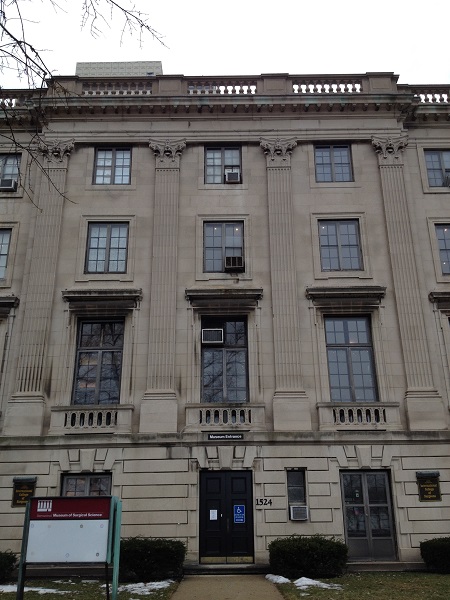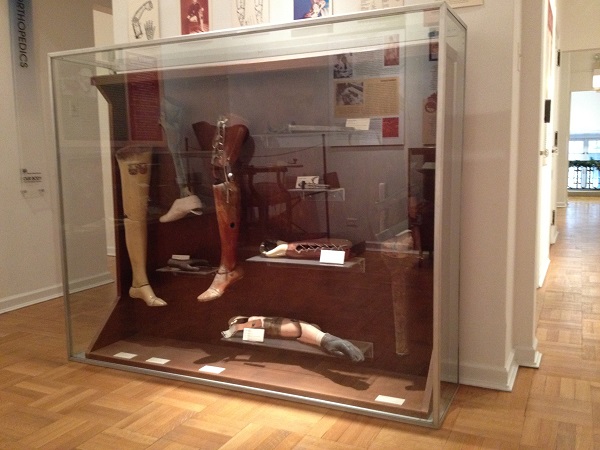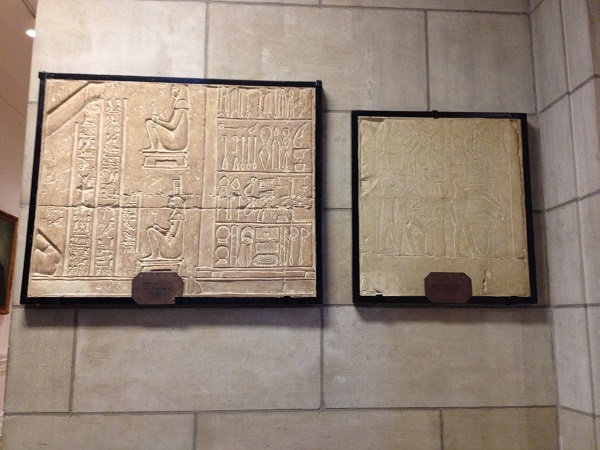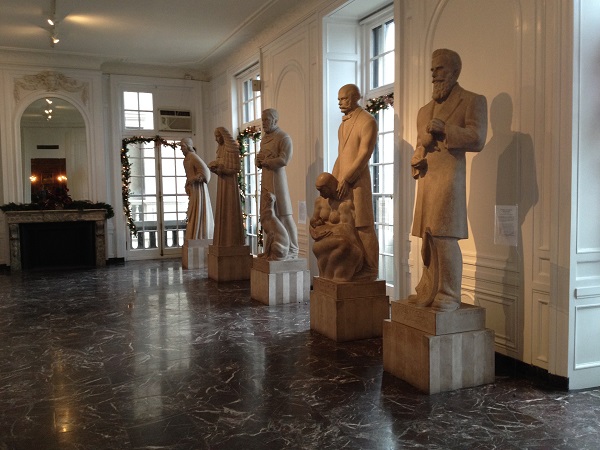
Among the high-rises that tower over Lake Shore Drive in Chicago, there are a few regal greystone buildings that date back to the early twentieth century, if not earlier. If you weren’t looking for it, you would probably never realize that, among those greystones sits one of the only museums in the country dedicated to the history of surgical science.
I started my visit to the International Museum of Surgical Science on the top floor after spending about 15 minutes chatting with the girl at the front desk. It was a cloudy Saturday and considering the off the beaten path location of the museum, I guessed that I may be one of the few visitors she saw that day. I asked her how long I might need to check everything out and she said it really depended on my interests – she once had visitors from Germany spend an entire day and still want to come back the next day!
Up on the fourth floor, I quickly perused an exhibit on Incan surgical instruments before moving on to a corridor featuring milestones in medical imaging in the 21st century. Next up was a room displaying the history of orthopedics and prosthetics, including a wheelchair from the 1780s and prosthetics from the early 1900s.
I was fascinated by the next exhibit on the spine, considering my family’s history of back and neck problems and my own herniated disc in my neck. Seeing how back problems were treated in centuries gone by was a little scary – especially the picture of a ladder that was used to jolt people’s spines back into alignment. Finally, I passed a room full of paintings that depicted major breakthroughs in medical history with a skeleton in the middle complete with red and blue strings that represented all of the body’s veins and arteries.
And that was all just on one floor!
Down on the third floor, I checked out a very interesting exhibit on the history of our attempts to alleviate pain – through drugs, hypnosis, surgery and therapy. I learned about the first widespread use of anesthesia during the Civil War and about conditions like rheumatoid arthritis, fibromyalgia, migraine headaches and carpal tunnel syndrome. In the next room, I got an up close and personal look at a dental x-ray machine from the 1920s and then got to take a peek at some works of art by the museum’s artist-in-residence. Yes – this wasn’t just a museum about medical history and devices; there was art too!
On my way down to the second floor, I was pleasantly surprised to see some pieces of stone inscribed with pictures of ancient medical instruments – a replica of the same stone I saw at the Temple of Kom-Ombo in Egypt back in 2008!
The second floor mostly consisted of the Hall of Immortals. I felt like I stepped into an art museum, walking by life size (or larger?) sculptures of some of the biggest names in medical history. There was Imhotep – an Egyptian who is said to be the earliest known physician and who has a temple built in his honor on the island of Philae in Egypt (I was loving all of the Egypt connections!). And there was Hippocrates and Louis Pasteur and Joseph Lister and Marie Curie. At one end of the hall was a large fireplace and at the other was a small library. I was finally feeling like I was in an old mansion rather than a museum.
Finally, back on the first floor, I stopped into a model apothecary shop before calling it a day. Two hours after I started my exploration of the International Museum of Surgical Science, I headed back out the door, feeling just a little bit more knowledgeable and a little more interested in medical history than I was when I walked in.
If You Go
The museum is located on Lake Shore Drive, just south of North Avenue. Take the Red Line to Clark and Divsion, walk east on Division and then north on LSD. Or take the 151 bus to LSD and North Avenue and head just south. It’s open 10:00 a.m. to 4:00 p.m., Tuesday through Friday and 10:00 a.m. to 5:00 p.m. on Saturday and Sunday. Admission is $15 for adults, but free on Tuesdays.






